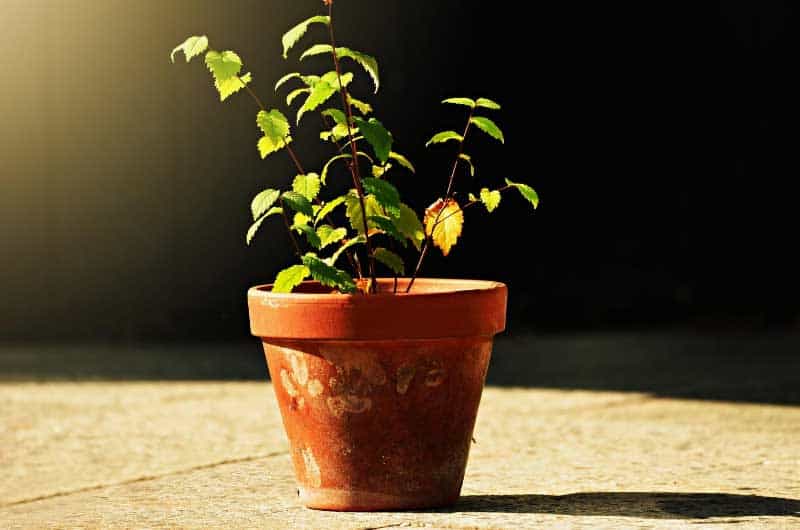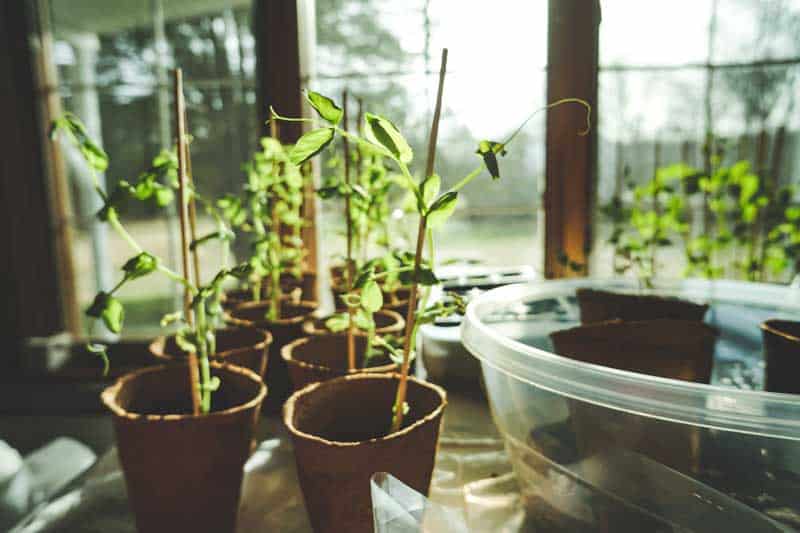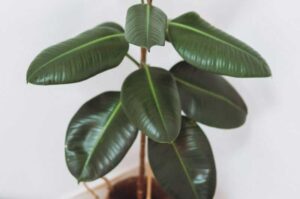Is my plant getting too much light? Can too much light kill a plant?
A quite obvious question among the plant enthusiast is that is my plant getting too much light? If yes then they often worry about whether this condition can hamper the plant or is it good for the plant. So in this blog post, we are going to discuss the question is my plant getting too much light? And also after reading the post you will get a perfect lighting condition for your plant.

What is too much light for a plant?
Before going to the question of whether my plant is getting too much light or not, first, let’s discuss what is too much light for a plant? How much light is enough for a plant, that the plant actually needs?
So to understand this concept we have to analyze two terms, which are
- The light duration
- The light intensity
Both the light intensity and light duration play a major role in the physical and physiological development of the plant, and both aspects combine to give a perfect lighting condition to a plant.
When we are saying too much light for a plant, this means either the light duration is too much, or the light intensity is too much, or both light intensity and duration are high for the plant.
Now let’s discuss both aspects one by one.
1, The light duration
Light duration is the time period for which a plant is getting light. It is the number of hours in which the plant actually receives light, in a day.
Technically it is an ideal condition for a plant if it is getting light for the whole day because the plant can carry out photosynthesis throughout the day and can produce more and more amount of carbohydrates.
But actually, this concept is not correct. Plants do need a dark period to use the synthesized carbohydrates through respiration. Also, many plants need a dark environment for a specific period of time to induce flowering.
Further, the relation of light duration to plant growth is species-specific. Some plants do not get affected by the amount of light they are getting, while some need a particular amount of day length or dark period.
For example, certain plants like the chrysanthemums, poinsettias, and some cactus, induce flowering only when the get a dark period of more than 12 hours. So they need a short day length and a long dark period. They are called Short-day plants.
Plants like spinach and lettuce need a dark period of fewer than 12 hours to induce flowering. So they need a long day and a short night. Therefore they are called long-day plants.
Some plants like tomato and sunflower are not dependent on the day length, therefore called day-neutral plant.
From the above discussion, we can conclude that the duration of light matters a lot for plant growth. If the plant getting light for longer durations, then the condition is not ideal for the plant.
You can check my article about the impact of light duration on plant growth by CLICKING HERE. You will get to know that plants actually grow faster at night.
2. Light intensity
Light intensity is the quantity of light falling in a particular area, in a particular time period. It is measured in Lux or foot candles.
Bright and direct sunlight is of higher intensity, and diffused, indirect light is of lower intensity.
When we are discussing about a plant getting too much light, the light intensity has the most devastating effect on plant health.
A highly intense or direct light brings higher temperatures along with it. Which forces the plant to emit more water in transpiration to cool itself. When the plant loses more water, there is a shortage of water for photosynthesis.
Further higher temperatures also evaporate the soil moisture quickly. Ultimately the plant will suffer from water scarcity if it is exposed to bright direct intense light for a longer period of time. As a result of which the leaves will start yellowing and then drooping.
But like the light duration, the light intensity is also species-specific. Some plants are well adapted to grow in bright sunlight, while some will grow better under the shaded areas, getting diffused sunlight. The formers are called sun-loving plants, while the latter are called shade-loving plants.
From the above analysis, we can conclude that we can not find a fixed lighting condition for all plants. The light requirement will vary from plant to plant. While indoor plants like the Calatheas or Monsteras need only a few lights, on the other hand, the big fat trees like the banyan trees, etc, needs a high amount of light.
Too much light for your plant depends on the species of plant you have.

Can an indoor plant get too much light?
The answer to this question is YES, an indoor plant can get too much light. The main reason for this is that you are keeping your plant in the wrong place.
Mainly house plants need a medium to bright indirect sunlight. They get this light through the windows. Usually, it is not possible to enter a huge amount of light through your window, so that your plant will be affected, but sometimes due to the wrong placement of your plant, it can get too much light.
If you are keeping your plant very close to your window (especially a south-facing window or a west-facing window) your plant will get too much direct sunlight for the whole day. If you have kept your plants in your house where the direct sunlight is evident in most parts of the day, then your house plant is getting too much light.
It is not ideal for most of the house plants. Like the Philodendron and Monstera dubia plants never like too much direct sunlight. They just fade away. So be cautious while choosing the place for your house plants.
Signs of a plant getting too much light
If a plant is getting more amount of light than it actually needs, it starts to show various symptoms like
- Leaves will show some yellowish discoloration, yellow patches.
- The leaf margin will turn yellow.
- The entire leaf will turn to yellow, except the veins.
- The foliage will start wilting.
- The plant growth will gradually reduce.
The yellowing of leaves is often found due to nutrient deficiency, but in that case, the leaves can be de detached from the plant, by easily pulling out them. But the yellow leaves due to an excess amount of light can not be pulled out easily.
The above-listed symptoms are generally seen in most of the plants getting too much light. But different plant species can show some different symptoms. It is purely based on the plant species.
Can too much light kill a plant?
If your plant is getting too much light, then yes it can kill the plant. Not immediately, but in the long run, it will kill the plant.
Plant getting too much light for a longer period of time can completely stop its growth, and then gradually started drooping and then ultimately die. If proper preventive measures were taken in time, then it will surely save your plant.
So the answer to the above question is Yes, too much light can kill a plant.
Preventive measures
It is necessary to take some preventive measures when your plant started to show the symptoms of getting too much light. Here is a list of things you can do.
- Change the location of your plant.
- Keep it at some distance from the window.
- Try to keep the plant near an east-facing or north-facing window. These are the ideal places for a house plant.
- You can put a curtain on your window, in order to prevent the plants from harsh sunlight.
You can choose the feasible preventive measures according to your needs, and prevent your plant from dying.
Conclusion
The perfect answer to the question is my plant getting too much light, depends on the plant species you have. If your plant is showing the symptoms that are listed above, then you have to surely take the preventive measures as soon as possible. Otherwise, the plant will be fade away.
If you have a plant, that can tolerate too much light, then keep it under direct sun, or keep it under growing light, to provide an adequate lighting condition for the plant.
Act according to the signs and symptoms shown by your plant, and enjoy gardening.







One Comment
Comments are closed.